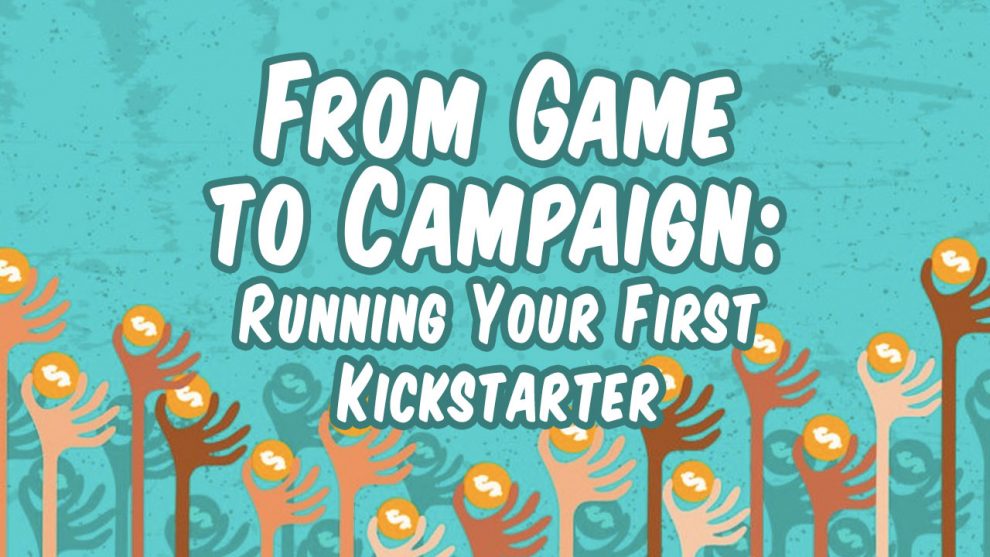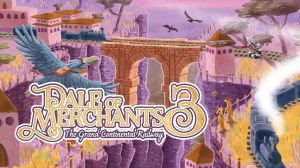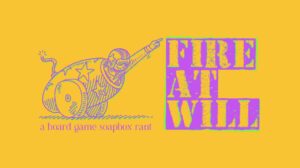Many of us dream about designing a board game. We might produce a prototype, we may even try it out with our friends (see Art Franzs article for tips on moving from idea to playable prototype). But then what?
Kickstarter is a crowd-funding platform that offers designers a route to get their game financed, produced and out into the world. Its not an overstatement to say that it has fundamentally altered the board game landscape.
But with so many variables going in to making a great Kickstarter campaign, what does it look like behind the scenes? What skills do you need and what pitfalls should you avoid? We talk to two members of the Meeple Mountain team, Logan Giannini of The Enigma Emporium and Robert Crowter-Jones of Slight Games, to find out about their experiences running their first Kickstarter campaigns.
Can you quickly tell us about your games?
Logan: Wish You Were Hereis a narrative puzzle game in the vein of such escape-room-themed titles as Unlock! and Exit, only its real-world based, has no time limit, and both allows and requires you to use your research skills online to find information to help you solve the puzzles. The entire game is played over 5 postcards with myriad puzzles embedded in each as well as online.
Robert: Snitch is a social deduction game where players will try to complete heists or betray everyone and snitch. A similar style of game to CashnGuns or the One Night series, the game is designed to scale with larger groups and create a fast and fun game space for players of all ages.
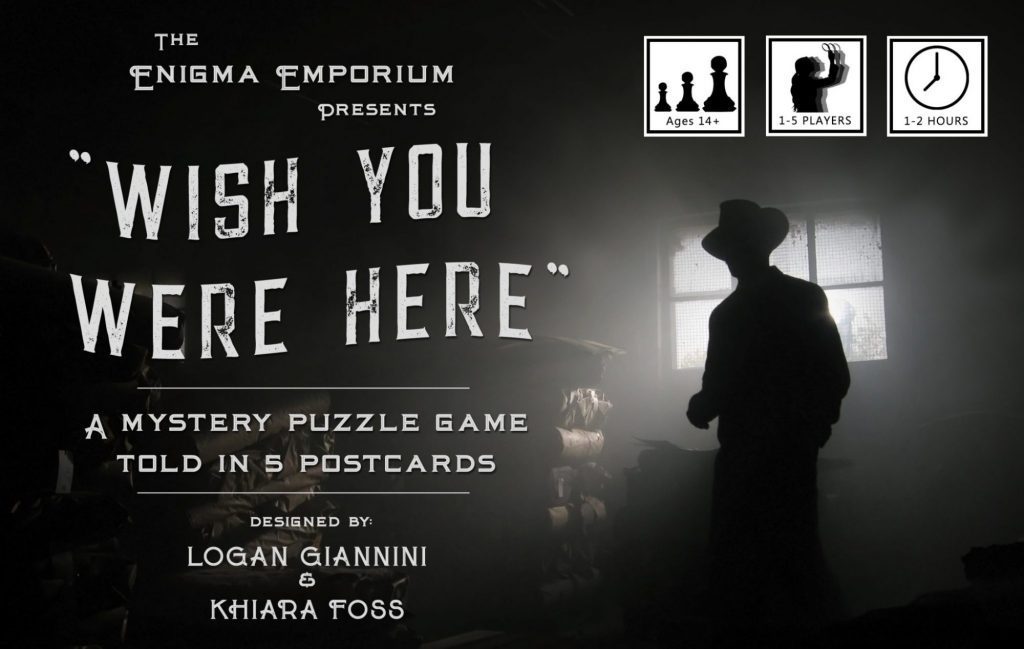
What was the development process like? Were you always aiming to publish?
Logan: We (my business partner and I) always knew wed be self-publishing, though what wed be self-publishing didnt coalesce right away. We had a half dozen various projects that we were working on, and it wasnt until something clicked and I stayed up all night designing the first postcards that we looked at it and knew that this would be our first product. I think, mainly, we were waiting for the one game that we knew would both have crowd appeal and that we knew we could produce easily as our first project.
Robert: We (three friends from university and I) had been playing games and designing games for ourselves for nearly 10 years. When we started we had no inclination of publishing, but a couple of years ago I started buying new independent games on Kickstarter and we all thought – why dont we do it! After lots of initial trials and playtesting we landed on Snitch as the first game we would publish in this form. From there we knew we were fine tuning the game for a Kickstarter audience and to ensure we could deliver a great experience to backers.
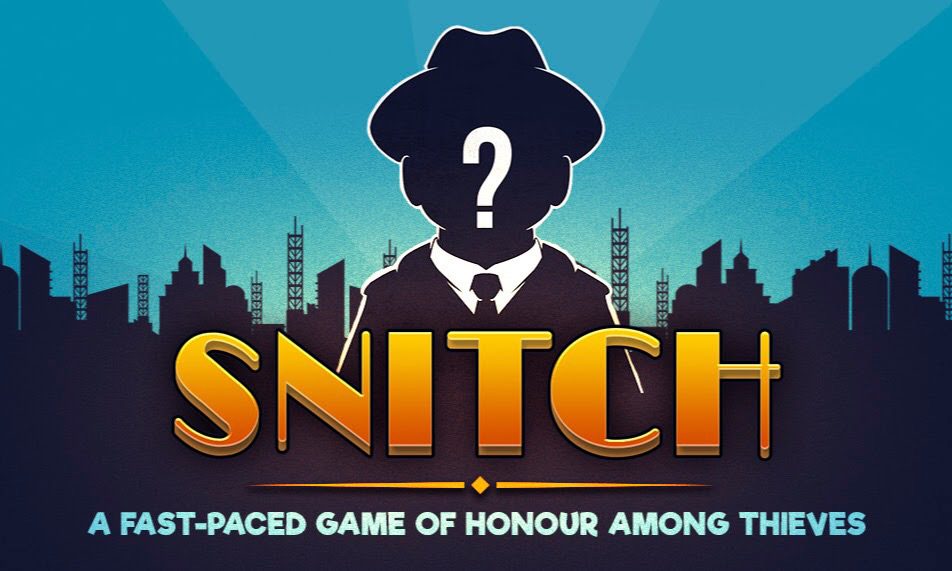
Why did you choose Kickstarter instead of approaching a publishing company?
Logan: We never even considered a publishing company. A large part of our inception as a company was looking around at what was being produced by these other publishers and realizing that none of it quite fit what we wanted to do. We love a lot of other puzzle games, but we also wanted to do things our own way and maybe fix some of the perceived problems we saw with the genre–or at the very least try something new. To that end, there was never any doubt in our minds that we would have to start our own publishing company to do so.
Robert: In some ways we didnt – it wasnt that exclusive a process. We showed the games we were working on to publishers in a casual way as we were developing them. We always wanted to self-publish because it gave us a clear path to realising the game, but along the way we were open to any discussions. In the end, we were ready to go and did not feel the need to partner up on this game (yet!).
Designing a game is a very different process from producing and selling it. Can you tell us a little about the different skills required? Are these things you already had within your teams or have you learned as youve gone along?
Logan: Kickstarter, specifically, is a unique beast. Whereas a traditional publisher builds a network and grows a system for releasing their product, every single time you launch a game on Kickstarter its a fresh battle to get noticed. Ive seen games from very successful publishers fail because they took things for granted based on past success. In a market thats so jam-packed with quality games, getting noticed is the hardest battle and so marketing is one of the biggest hurdles to a successful Kickstarter. For my part, I think the biggest favor a publisher can do for themselves is to produce a large number of review copies, and get them out early. It puts a little strain on your timeline, but getting the game into the medias hands 1-2 months in advance will pay dividends when youre ready to launch.
Robert: With four people in the team we were able to divide and conquer. Okay, we needed everyone for the early playtests and we each took the game to different playtest groups and events. However there is lots to do other than actually playing the game: everything from art design, sourcing an artist, writing the rule book, marketing, production, fulfilment … theres a lot to split up amongst the team. Theres something for everyone though – including lots of spreadsheets. I am glad to have worked with friends on this first project because it would have been a lot to take on alone or with people you dont know as well.

Can you describe the processes you took going from your prototypes to finding companies that would actually create your games?
Logan: I cant really speak to this, as part of our process was landing on a project that could be produced very simply. Since the entire game is postcards all we sourced was a printer who could handle our quality needs.
Robert: This was a really interesting stage. We started with Dominion cards that represented different cards. Then we took on blank cards that we could scribble on. Finally we went to producing a prototype with art – this is the first time it starts to feel like a real game. First big thing I would say is print 1 copy only the first time. This might seem more expensive (per copy) but I am so grateful we did this. The art didnt fan the right way and it was not as visually striking as we wanted. A few tweaks, and a batch set could be ordered and used to playtest. These sets were both US made with print on demand suppliers – high initial costs but small order volumes.
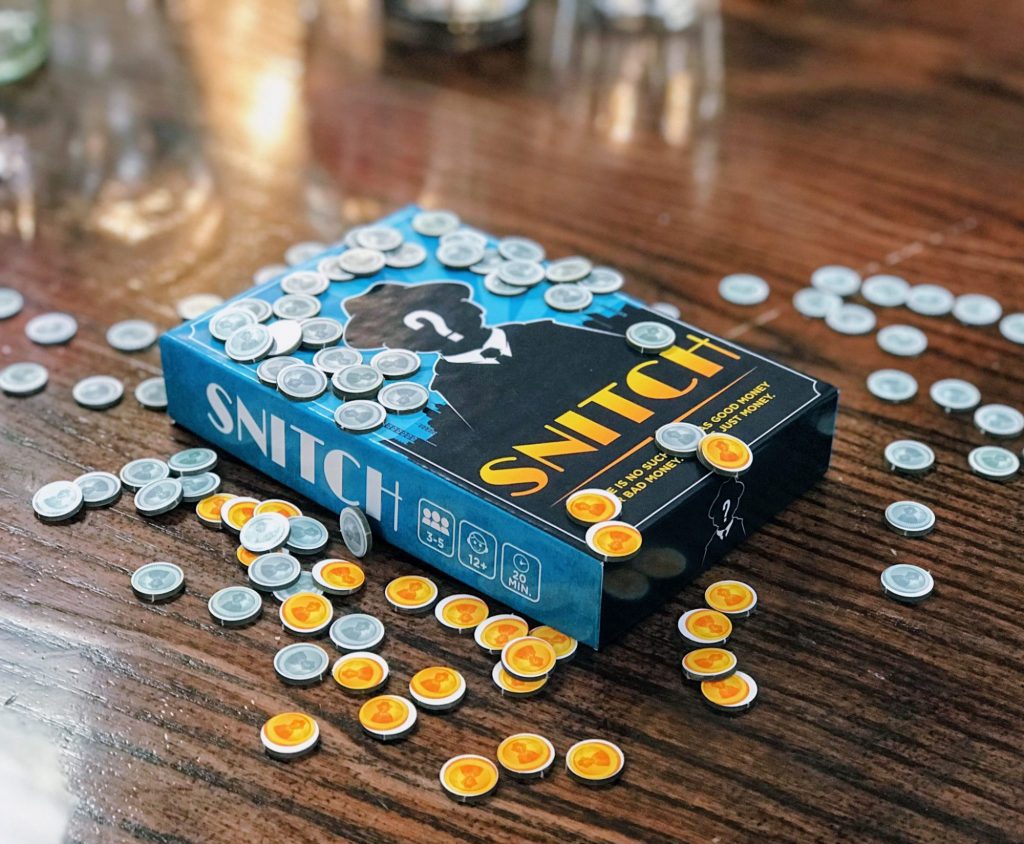
Youve both recently discussed finances in campaign updates, how did you find the process of setting prices, funding levels and the campaign target?
Logan: We took a shot in the dark. We wanted to aim low so we were certain that wed fund and could come back with our 2nd project and have previous backers and previous experience to build on. We had no idea how fruitful our marketing work would be, and in the end we ended up setting a goal that well probably fund about 7 times over when all is said and done.
Robert: This is a benchmarking with a lot of guesswork. By this point you half love the game as a project you have poured your heart into, and you half hate the game as the one you have played 1000+ times. You cannot rely on your own judgement. We priced it to similar games in the market with feedback from playtesters and then we set our funding goal at the minimum viable product.
Kickstarter is a public arena, how much time did you spend working on your campaign pages, what did you feel was the most important thing to get right?
Logan: Since were a puzzle-based game, we cant actually delve too much into showing what youre doing when you play. As such, I knew it was important to at least have quality images displaying the product. When I scan a new Kickstarter, I scroll through fast and take in the visuals before doubling back to actually read about the rules or check out reviews. As such, I think great care needs to be given to making sure there are visual hooks. On top of that, in a market thats so full of competition, there should always be reviews and, depending on the type of project, how-to-play videos.
Robert: The visuals have to be great. You have 3 seconds at most to capture someones attention and then probably 5 more seconds for them to form an opinion. You need to have striking, and individual art. Then you need to have a professional and clear message. Here you can trust your judgement – what would you want to know and what would be the most important things for you. Graphics do help because they say a lot more in a short period.

What strategies have you used for promoting your campaigns? Do you have any thoughts on the most successful?
Logan: We can see in the Kickstarter dashboard where some of the traffic is coming from and really its all over. We took a “throw everything at the wall and see what sticks” mentality to our first campaign, and as a result we have had a steady stream of coverage in the form of blogs, podcasts, and videos trickling out as the campaign has run. As valuable as all that is, probably the most valuable form of “marketing” is buzz, and thats trickier. A lot of that boils down to getting people talking, demoing at cons, etc. But folks are exponentially more likely to back a project that they heard a fellow gamer talking about than one they saw a review for. Psychologically, thats just how were wired.
Robert: I guess we didnt have as much of the review / blogs lined up as we might if we do this again! We tried to build our own direct audience – instagram and twitter were great and reddit was helpful. There is no substitute for helpful engagement in the community and “paying it forward”.
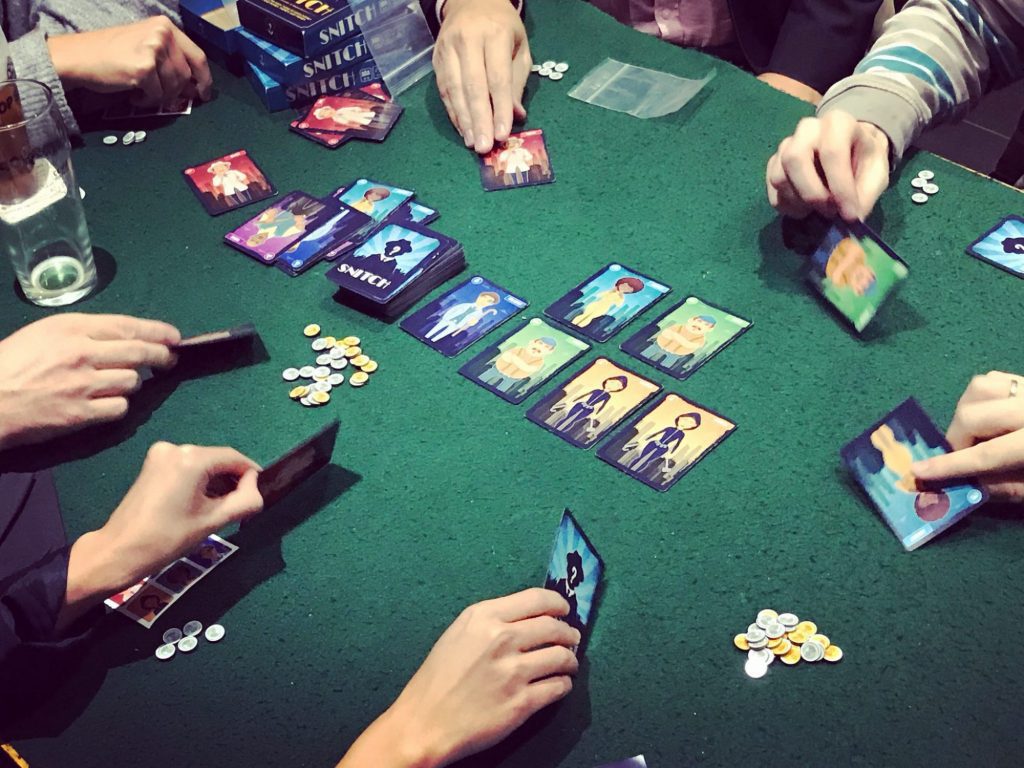
The preparation and then production obviously require a lot of time and effort, but how much work is going on behind the scenes during the campaign itself? How important are the updates and comments areas of your campaigns?
Logan: Based on campaigns Id seen run into problems, weve been hyper vigilant about addressing comments, messages, etc in a timely, thoughtful, and respectful way. That said, ours is a simple project and there hasnt been interaction on the level of a larger campaign, which can generate tens of thousands of comments when all is said and done. So right now were keeping up just fine. As we grow, it will become a very different challenge.
Robert: I would want the publisher to be responsive and so we have been responsive. Getting back to comments and messages has been an important part of our plan for going live. That said, I also dont like getting too many updates from a publisher and so we have tried to keep these under control as well! Update when we have something to say, but be positive and responsive throughout.
Whats been the hardest thing to get right with Kickstarter and would you do anything differently?
Logan: Funnily enough, I think we were prepared for all the worst scenarios and none of the best ones. We were caught off guard when we blasted through our funding goal in 7 hours and have steadily worked our way to (as of this writing) nearly 500% of that goal. And we werent ready, we didnt know how to respond, we hadnt planned stretch goals because we werent sure wed even fund and, instead, just wanted to put everything we had in the project itself without holding any “stretch upgrades” back. We bounced back and responded with a whole additional postcard for KS backers, but in future we will definitely have a much more granular plan in place before launch.
Robert: The planning is very tricky. The more pledge levels you add the more different scenarios you have to plan for. Imagine the worst possible distribution and at what point would you fund on that basis? Okay, but now imagine that the distribution is completely opposite! You have to plan for all of these and every pledge level and new shipping location makes this a very complex matrix.

Whats been the most surprising element of running your campaigns?
Logan: I feel like Ill be jinxing myself if I say nothing, but apart from the sheer outpouring of support for the game, I dont feel like any other facet of the campaign has caught me too off-guard.
Robert: Day 2 – Day 2 was great. Day 1 we felt confident about, we knew who would back on Day 1. Day 2 was when we really started to feel like there were more people backing us and it was a really exciting feeling.
As a consumer theres an impulse to check campaign pages frequently, but as the show runner I imagine this is even more addictive. How many times a day do you check your campaign pages?
Logan: For the first week I would check it roughly every 5 minutes. Now Ive got that down for every hour or so.
Robert: This is so true. I pretty much have this running the whole time on my phone. I actually close the app and re-open it just to check its up to date.

Do you have any plans for future games and would you go the Kickstarter route again?
Logan: Absolutely. Were planning on launching our second Enigma in late Q1 of 2019, if all goes well. We also have several others in development but without a set launch date, yet.
Robert: We (Slight Games) absolutely have more planned. We are very excited to get back around the table with some new games and take the best of what we have seen in the market since and build up some new innovative ideas.
Thank you both for your time. Wish You Were Here by The Enigma Emporium (Logan) is currently on Kickstarter here (you can see an independent review of Wish You Were Here by a Meeple Mountain reviewer completely blind to Logans identity here). Snitch by Slight Games (Robert) is currently on Kickstarter here. For those further interested in Kickstarter check out Meeple Mountains Kickstarter Archives, or look further afield to Jamie Stegmaiers Stonemaier website which contains a wealth of information about his (not always positive) experiences using Kickstarter.


